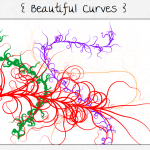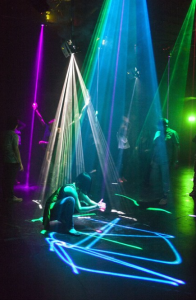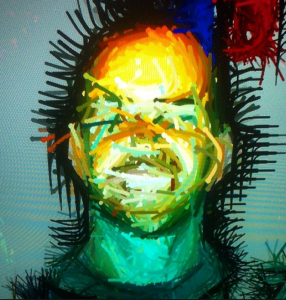by Boughton Primary School
Class 1: a mixed reception and KS1 class
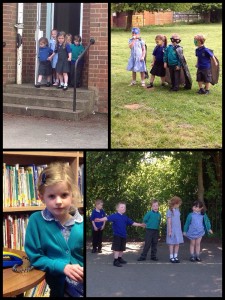
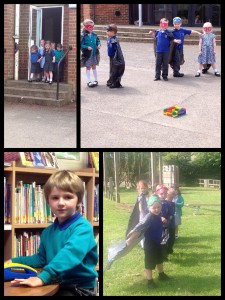
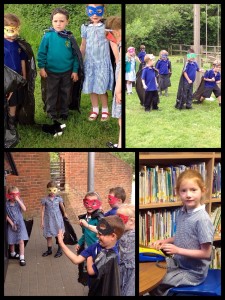
Private Link to video
Class 1 created their own superhero film. There were twenty reception and six year one children involved and the topic was Superheroes.
The project was planned to take place over approximately seven sessions, so it could be completed by half term. We worked on the project over six days, working on the project one session per day, so not to overwhelm the children with the filming process.
We began the project by talking about what we know about films, how they are made and who the people are that make them. This led on to a literacy session about storyboarding film ideas. All the children created storyboards featuring their ideas for problems their superheroes could solve. Four ideas were chosen to feature in the film.
The children then created their own superhero characters and costumes.
Four separate narratives were chosen to make the filming process more manageable. The children were split into four superhero teams and were involved in filming for their part of the film.
We had a premiere of the film (complete with popcorn) on the final day of term with Class 2 joining us to watch.
After viewing the film, we had circle time where we discussed the film: what we enjoyed doing and anything we noticed about the film and the way it was created. The children’s voices were transcribed and their voices added to a classroom display about the project.
The classroom display also included a QR code which when scanned, takes the children to a Vimeo account where they can watch the film.
The film was edited by me (Nicola), without the children as we were too short on time, but following the screening of the film all children were invited to take a look at the editing timeline and play around with the editing features. They could also film short clips and practice editing.
The film was filmed and edited entirely on an ipad. The apps we used were:
iMovie, Intro Designer, Pic Collage and FancyQR to create the QR code
Learning Outcomes
The project covered almost all of the EYFS seven areas of learning:
PSE
The children could explain their own knowledge about films and story structures. They took account of each other’s ideas and could talk about the character’s feelings in the film and within their own storyboards. They worked together well within their superhero teams, supporting each other during the filming process.
Communication and Language
The children extended their vocabulary by using the film terms they had learnt ‘camera roll’, ‘action’ ‘cut’ etc. They listened and responded to each other’s ideas about the film. They were able to use expression to introduce their superhero characters’ to camera. They responded well to instructions and were able to concentrate on the task.
Physical Development
The children used their bodies in different ways to travel across spaces, as we had been exploring in PE sessions.
Literacy
The children understand that stories, including film stories have a beginning, a middle and an end. Many of the children used their independent writing skills to add text to their storyboards.
Understanding The World
The children can discuss the difference between a good person and a bad person within the film. They can use ipads to interact with software for film editing and can recognise that ipads have a range of uses.
 We also looked at resources from Barefoot Computing on drawing crystal flowers and thought about how these might link with analysing Rangoli, Islamic or Celtic patterns, as well as with aspects of the maths curriculum.
We also looked at resources from Barefoot Computing on drawing crystal flowers and thought about how these might link with analysing Rangoli, Islamic or Celtic patterns, as well as with aspects of the maths curriculum.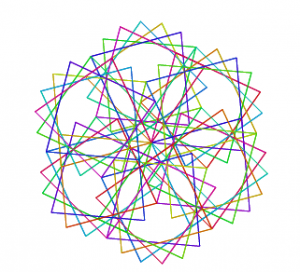 Other webtools that can be used alongside this theme include the online image generator Mutapic and the interactive art tools Weavesilk and Beautiful Curves.
Other webtools that can be used alongside this theme include the online image generator Mutapic and the interactive art tools Weavesilk and Beautiful Curves.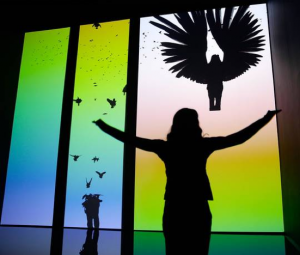 Alongside these we looked at some of the amazing projects created using digital technology by artists that were featured in recent exhibition at The Barbican, Digital Revolutions.
Alongside these we looked at some of the amazing projects created using digital technology by artists that were featured in recent exhibition at The Barbican, Digital Revolutions.

